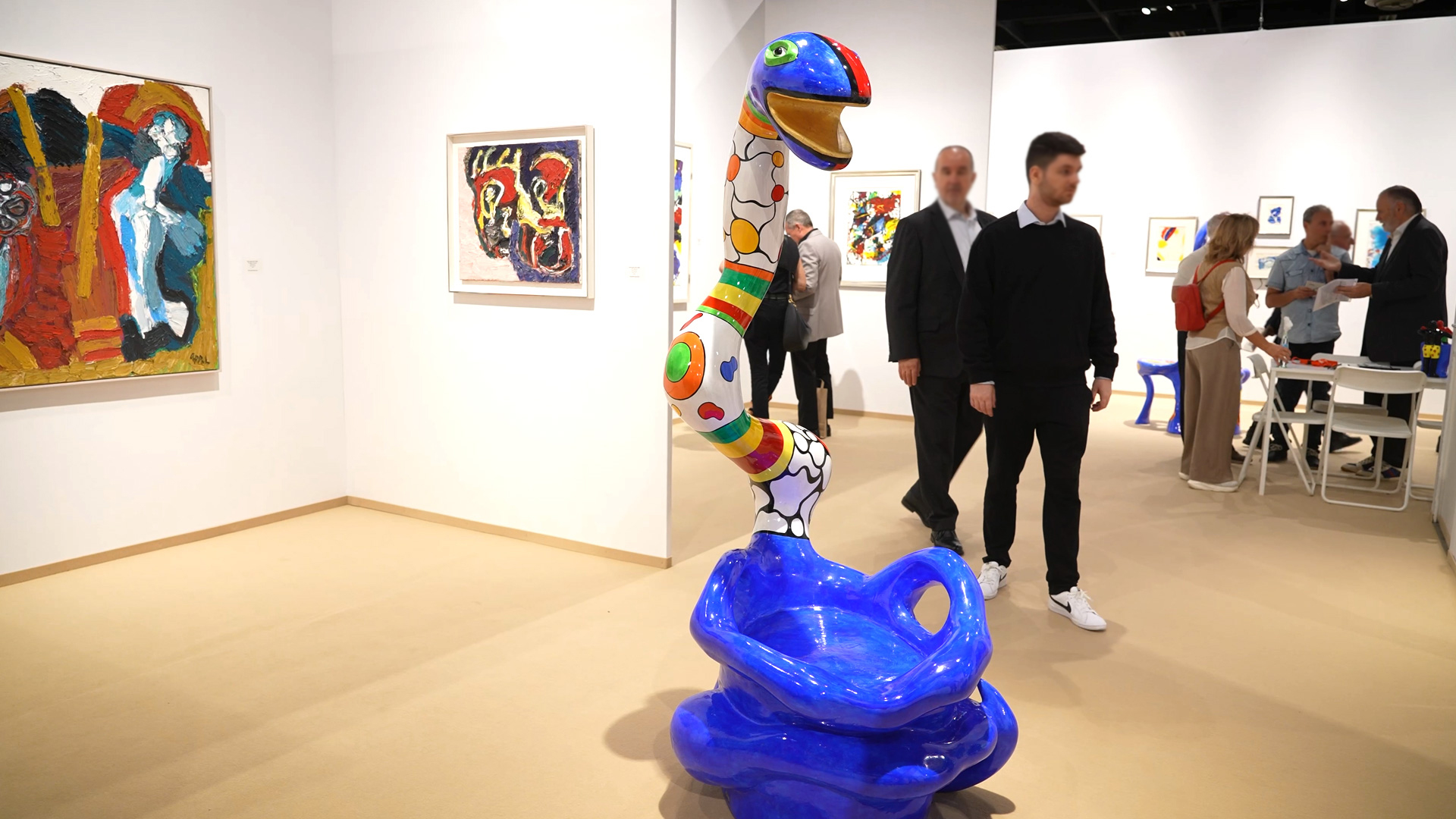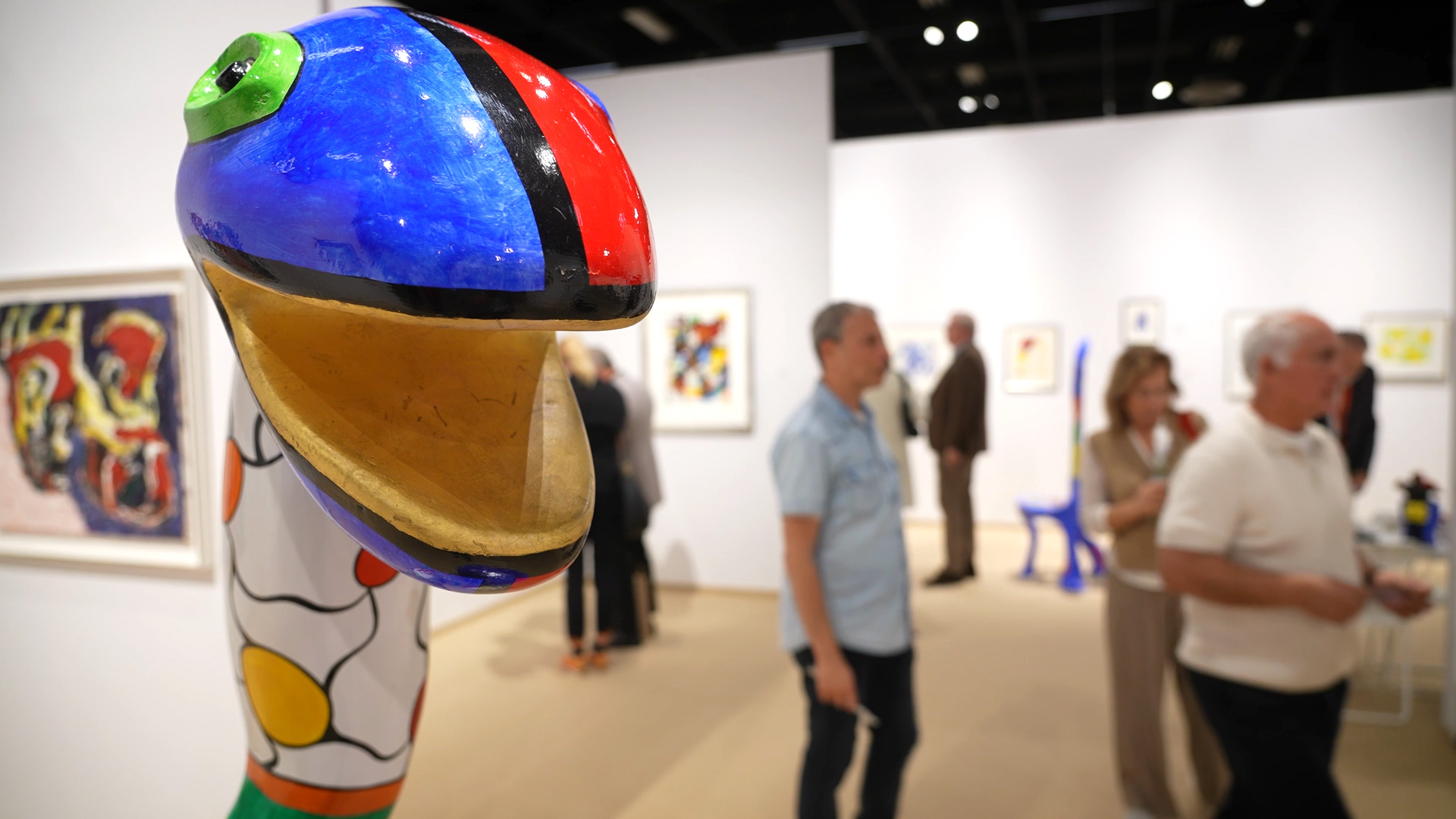The sculpture from 1991 presented at Galerie Delaive is one of those works by Niki de Saint Phalle that are often overlooked alongside her iconic Nanas. The object's form is reminiscent of a curving snake and combines sculptural design with a surprisingly functional idea.
Several of these figures actually served as chairs in her studio, because there was hardly any classic seating furniture there. Visitors took a seat on these works without any clear distinction being made between artwork and utility object.

The figure on display dates from a period when Niki de Saint Phalle was already well established internationally. Known primarily for her Nanas, she developed parallel works that are less iconic but no less characteristic. The snake-like object on display at Galerie Delaive was originally part of a small series that was used functionally in her studio.


Since she had hardly any chairs, visitors used these figures as seating. The combination of formal elegance and practical use gives the work a special effect: it is sculpture, furniture, and autobiographical object all at once. The snake-like form refers to mobility, protection, and transformation—motifs that appear in many of her works.
In France, she was part of a new spiritual movement that also included artists such as Yves Klein. Within this group, she remained the only woman who visibly took a feminist stance. Many found her work radical because she questioned role models and openly translated personal experiences into art.
For younger generations, she remains an important figure who consistently pursued her own path in a male-dominated art world. The connection to the artist can still be personally touching today—especially when people come into contact with her work through family or biographical stories.